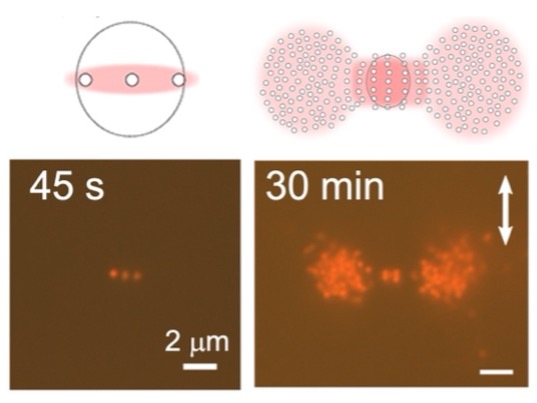Dynamics of Optical Matter
Since Ashkin’s breakthrough in 1986, optical trapping has been widely used to manipulate micro- and nanoscale objects across fields like material science and biology. The method typically involves using a tightly focused laser beam, where particles are attracted to the laser focus by the spatial gradient force.
In our research, we have demonstrated a novel approach where nanoparticles (NPs) can self-assemble and form dynamic structures outside the direct laser irradiation area. For example, we observed that gold NPs can evolve into “swarming” assemblies, extending beyond the focal spot due to optical binding. This unique phenomenon has been expanded to other materials such as dielectric particles and proteins, revealing new ways that particles interact with light and each other.
We are particularly interested in studying the dynamics of optically bonded NPs, utilizing advanced single-particle tracking (SPT) techniques to explore their behavior in great detail. Our recent development of a multiplane widefield microscope (MPM) allows us to track these particles with nanometer accuracy in three dimensions. This approach, combined with scanning electron microscopy (SEM) for complementary high-resolution imaging, offers a powerful toolkit to further investigate how these optically bound systems behave.
The next stage of our research will dive deeper into the motion and forces within these particle assemblies, and we are also working to integrate optical tweezers into high-resolution imaging systems. This will allow us to explore the intricacies of optically driven phenomena, which has important implications for the fields of nanomaterials, optics, and biological systems, offering new insights into nanoscale forces and interactions.
